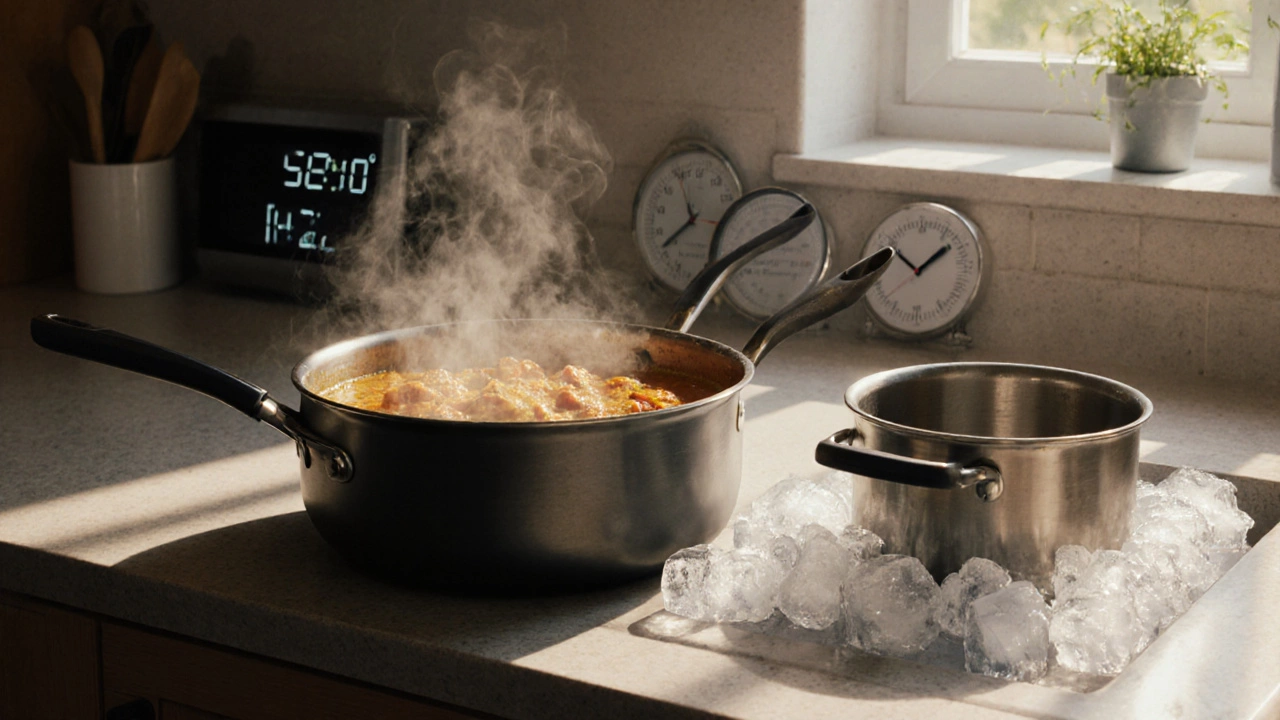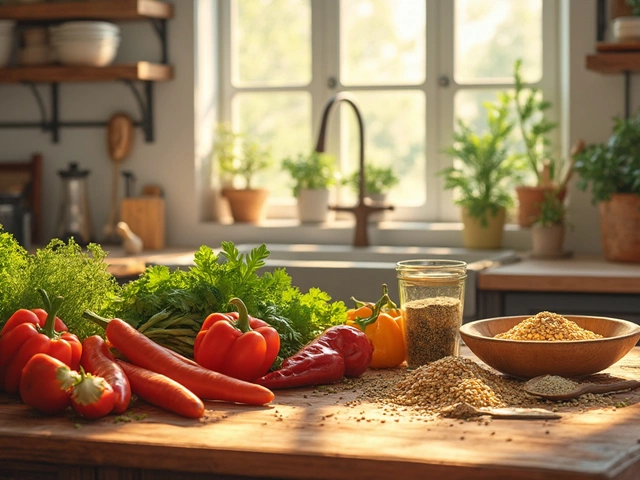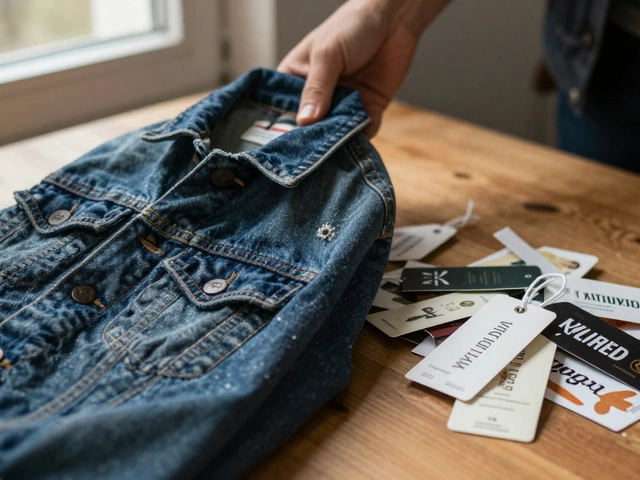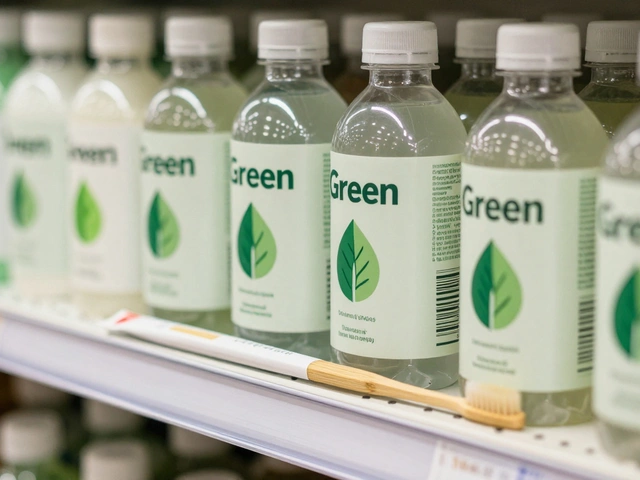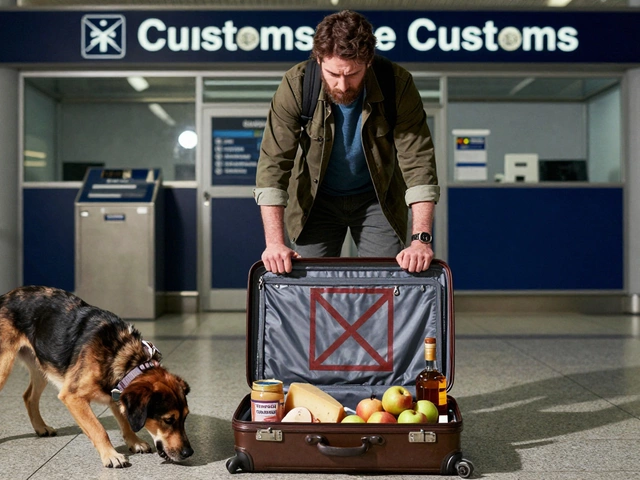Food Safety Timer Calculator
Every year, millions of people get sick from food poisoning - and most of it happens because someone left food in the danger zone too long. It’s not about dirty hands or old ingredients. It’s about temperature. If you’re meal prepping for the week, storing leftovers, or packing lunches, not knowing the danger zone puts you and your family at risk.
What exactly is the danger zone for food?
The danger zone is the temperature range where bacteria like Salmonella, E. coli, and Listeria multiply fast - from 5°C to 60°C. That’s 41°F to 140°F. It doesn’t matter if you’re in Sydney, Toronto, or Tokyo. This rule is the same everywhere. Bacteria don’t care about your location. They care about warmth and time.
At room temperature, a single bacterium can become over 2 million in just 8 hours. That’s not a guess. That’s from the U.S. Food and Drug Administration’s testing. And it happens faster in humid climates like Sydney’s. If you leave cooked chicken on the counter for two hours after dinner, you’re not saving time - you’re growing a bacterial colony.
Why does temperature matter so much?
Bacteria need three things to grow: food, moisture, and the right temperature. Meal prep gives them all three. A big batch of rice, a pot of stew, or marinated chicken breasts? Perfect breeding ground. The moment you stop cooking, the heat drops. As the food cools, it passes through the danger zone. The longer it sits there, the more bacteria settle in.
Here’s what happens at different temps:
- At 5°C (41°F) - bacteria barely move. That’s why your fridge works.
- At 20°C (68°F) - they start multiplying. Your kitchen counter is dangerous.
- At 37°C (98.6°F) - that’s human body temperature. Bacteria go into overdrive.
- At 60°C (140°F) - they start dying. That’s why reheating matters.
It’s not about how fresh the food looks. A bowl of pasta that smells fine could still have enough toxins to make you sick. Some bacteria, like Staphylococcus aureus, produce heat-resistant toxins. Once they’re made, reheating won’t fix it.
How long can food stay in the danger zone?
Two hours is the hard limit. If your kitchen is above 32°C (90°F) - like on a hot Sydney summer day - that drops to one hour. That’s not a suggestion. That’s the law in Australia’s food safety code (FSANZ Standard 3.2.2).
Think about your meal prep routine:
- You cook 4 portions of beef curry on Sunday.
- You leave the pot on the counter while you clean up.
- You don’t get around to dividing it into containers until 3 hours later.
That’s 3 hours in the danger zone. Even if it’s still warm, the outer layers cooled below 60°C long before the center. Bacteria didn’t wait for the whole pot to cool. They started growing as soon as the temperature dropped below 60°C.
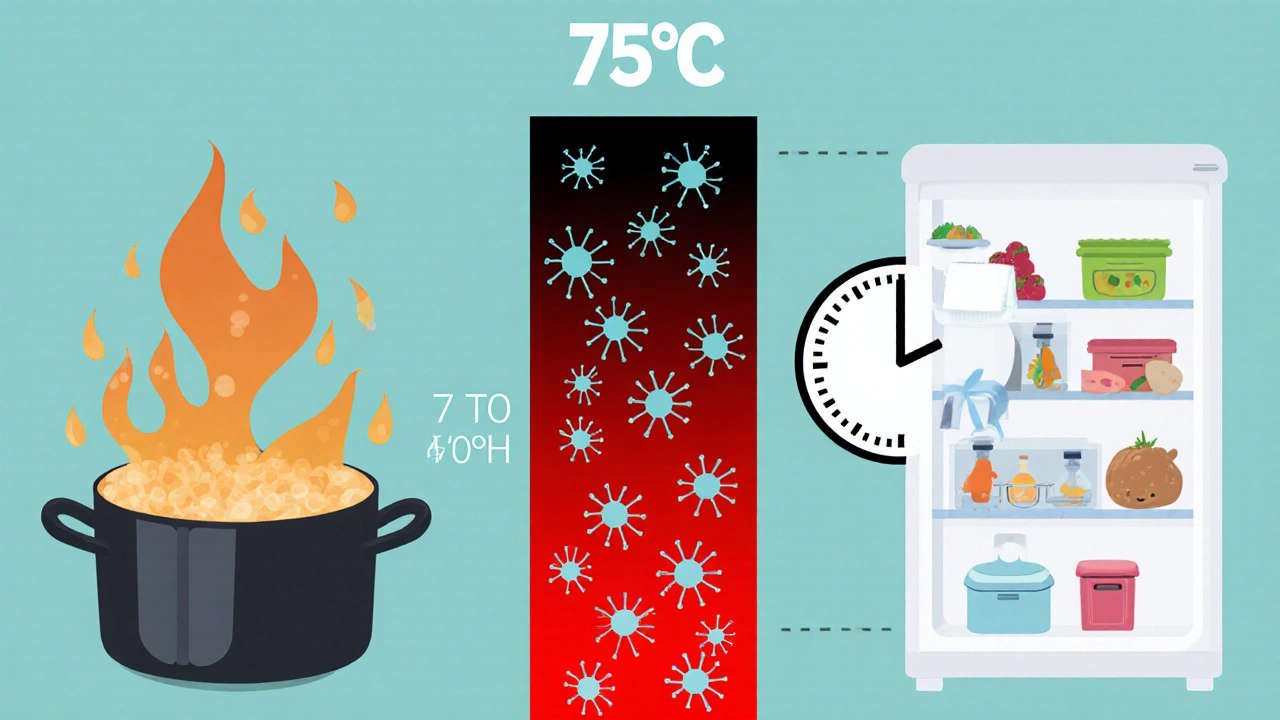
How to safely cool food after cooking
Don’t just stick hot food in the fridge. That can raise the fridge’s internal temperature and put other food at risk. Instead:
- Divide large batches into shallow containers - no deeper than 5 cm (2 inches). This lets heat escape faster.
- Use an ice bath: place the container in a sink full of ice water, stir occasionally.
- Use a blast chiller if you have one - but most home kitchens don’t, so ice bath works.
- Once the food hits 21°C (70°F), cover and refrigerate.
- Never leave food out to cool overnight.
Pro tip: Use a food thermometer. Don’t guess. Stick it in the thickest part of the food. Wait 15 seconds. If it’s above 60°C, keep it warm. If it’s below 5°C, it’s safe in the fridge.
How to store meal prep safely
Your fridge should be at or below 5°C. Check it with a fridge thermometer - the built-in display is often wrong. If your fridge is set to 8°C, you’re in the danger zone too.
Here’s how to store your meal prep like a pro:
- Label everything with the date you cooked it.
- Use airtight containers - oxygen helps some bacteria grow.
- Keep raw meat separate from cooked food. Cross-contamination is a silent killer.
- Store meals on the middle or bottom shelves, not the door. The door is the warmest part.
- Use meals within 3-4 days. After that, even fridge temps can’t stop slow-growing bacteria like Listeria.
Freezing stops bacteria cold - but doesn’t kill them. So if you freeze meals, thaw them properly: in the fridge, in cold water, or in the microwave. Never at room temperature.
Reheating food: what you need to know
Reheating doesn’t fix food that’s already spoiled. But it can kill live bacteria - if done right.
Heat leftovers to at least 75°C (167°F) throughout. Stir halfway through to make sure there are no cold spots. Microwaves are notorious for uneven heating. Use a thermometer to check the center.
And here’s a big mistake people make: reheating food more than once. Every time you cool and reheat, you give bacteria a second chance to grow. Cook once. Eat once. Reheat once - max.
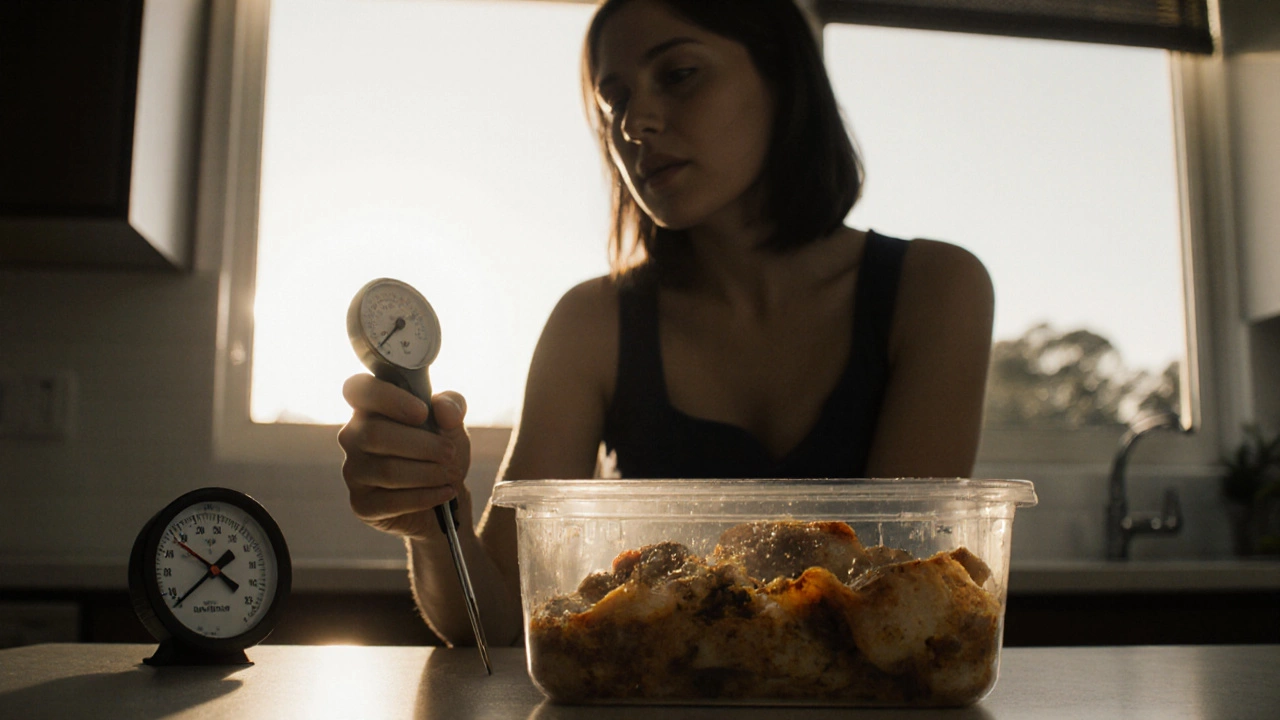
What to do if you’re unsure
When in doubt, throw it out. That’s not an exaggeration. It’s the rule food safety officers live by.
Signs your meal prep might be unsafe:
- It smells off - even slightly sour or fermented.
- It looks slimy or has strange spots.
- You can’t remember how long it’s been in the fridge.
- You left it out for more than two hours.
Don’t taste it to check. One mouthful of spoiled food can land you in the hospital. That’s not a risk worth taking.
Real-life example: Sydney meal preppers
Last summer, a group of 12 people in Bondi all got sick after eating prepped meals from the same batch. They’d cooked chicken stir-fry on Friday night, left it on the counter overnight, and reheated it Saturday morning. The temperature had been above 30°C for 14 hours. The food looked fine. Smelled fine. But it had 10,000 times the safe level of Bacillus cereus.
They all had vomiting and diarrhea. One person was hospitalized. None of them knew about the danger zone. They thought if it didn’t look bad, it was safe.
Bottom line: control temperature, control risk
Meal prep saves time. But if you skip food safety, you’re trading convenience for health. The danger zone isn’t a myth. It’s a scientific fact. And it doesn’t care how busy you are.
Here’s your simple checklist to stay safe:
- Cook food to 75°C or higher.
- Cool leftovers fast - in shallow containers, ice bath, or fridge.
- Keep food out of 5°C-60°C for no longer than 2 hours (1 hour if it’s hot).
- Store at or below 5°C.
- Reheat to 75°C - and only once.
- When in doubt, throw it out.
Food poisoning doesn’t come with a warning label. It comes with stomach cramps, fever, and a hospital bill. You don’t need fancy gear to avoid it. Just know the danger zone. Respect it. And act before it acts on you.
Is the danger zone the same in Australia as in the U.S.?
Yes. The temperature danger zone - 5°C to 60°C (41°F to 140°F) - is the same worldwide. It’s based on how bacteria grow, not local laws. Australia’s food safety standards (FSANZ) and the U.S. FDA both use this range. The only difference is how strictly it’s enforced. In Australia, businesses must follow it by law, but home cooks often don’t know.
Can I leave soup out to cool overnight?
No. Leaving soup or any cooked food out overnight puts it in the danger zone for 8-12 hours. That’s long enough for dangerous levels of bacteria to grow - even if it looks and smells fine. Always cool food within two hours, then refrigerate. If you forgot and left it out overnight, throw it away.
Does microwaving kill all bacteria in leftovers?
Not always. Microwaves heat unevenly. Cold spots can hide bacteria. Always stir leftovers halfway through reheating and check the temperature with a food thermometer. The center must reach at least 75°C (167°F). Don’t rely on how hot it feels - use a tool.
What foods are most risky in the danger zone?
High-protein, moist foods are the biggest risk: cooked meats, poultry, seafood, dairy, eggs, cooked rice and pasta, beans, and soups. These provide the perfect mix of nutrients and moisture for bacteria. Dry foods like bread, nuts, or crackers don’t support rapid bacterial growth the same way.
How do I know if my fridge is cold enough?
Buy a cheap fridge thermometer - they cost under $10. Place it in the center of the middle shelf. If it reads above 5°C, adjust the dial. Many fridges are set too warm to save energy, but that puts your food at risk. Your fridge should be at or below 5°C. The freezer should be at or below -18°C.

